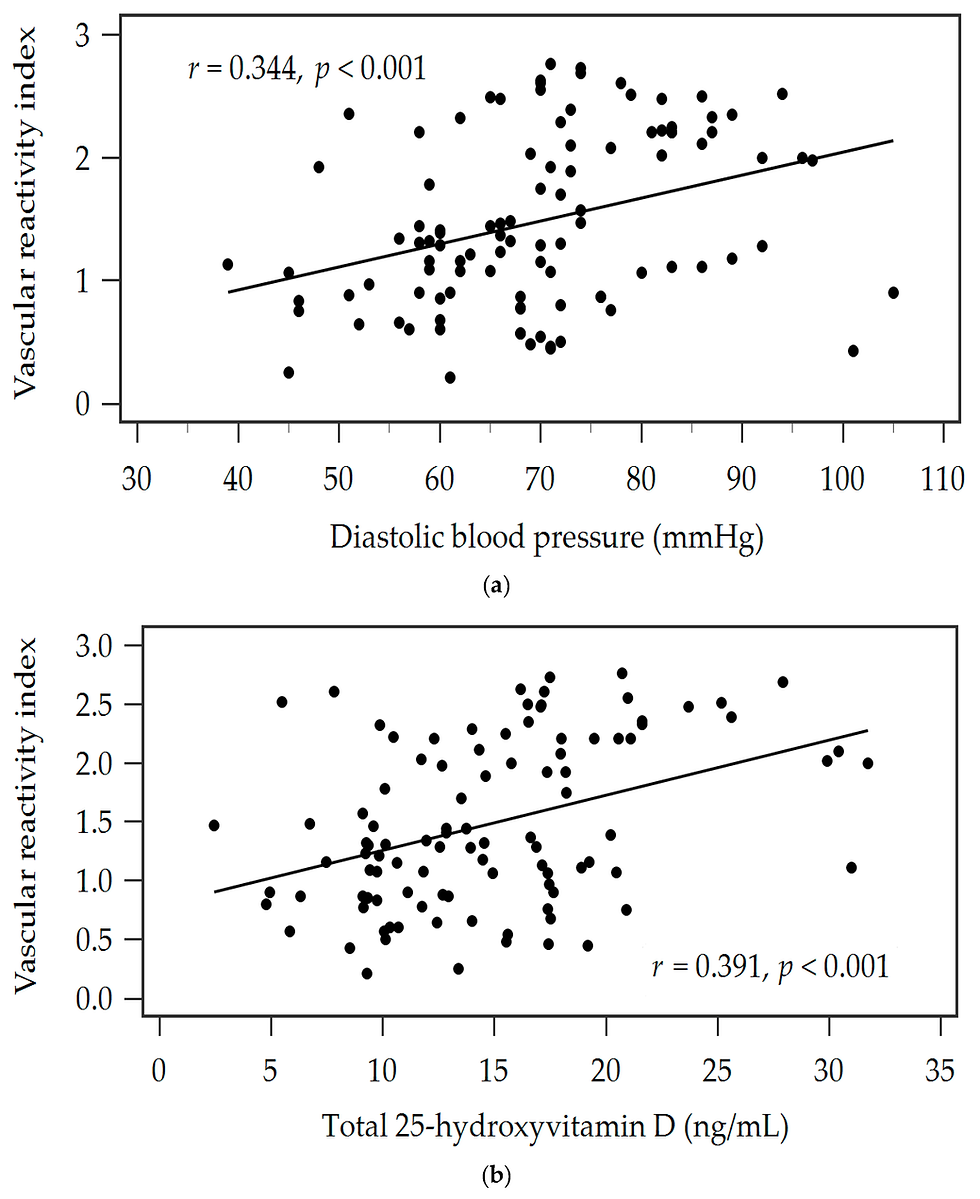Serum Osteocalcin Level is Negatively Associated with Vascular Reactivity Index by...
- heartlung
- Jan 9, 2023
- 2 min read
Serum Osteocalcin Level is Negatively Associated with Vascular Reactivity Index by Digital Thermal Monitoring in Kidney Transplant Recipients
Lin Lin, Liang-Te Chiu, Ming-Che Lee, Bang-Gee Hsu
Medicina (Kaunas) 2020 Aug 9;56(8):400.
Abstract
Background and objectives: Osteocalcin is the most abundant noncollagenous protein in bone matrix, which is considered a marker of bone formation. Previous studies indicate that circulating osteocalcin can be expressed by osteoblasts and even by osteoblast-like cells in vessel walls, and it is often associated with arterial stiffness. Our study aims to examine the potential association between osteocalcin levels and endothelial function among kidney transplant (KT) recipients.
Materials and methods: Fasting blood samples were obtained from 68 KT recipients. To measure the endothelial function and vascular reactivity index (VRI), a digital thermal monitoring test (VENDYS) was used. A commercial enzyme-linked immunosorbent assay kit was also utilized to measure serum total osteocalcin levels. In this study, a VRI of less than 1.0 indicated poor vascular reactivity; a VRI of 1.0-2.0 indicated intermediate vascular reactivity; and a VRI of 2.0 or higher indicated good vascular reactivity.
Results: Our findings show that 8 KT recipients (11.8%) had poor vascular reactivity (VRI < 1.0), 26 (38.2%) had intermediate vascular reactivity (1.0 ≤ VRI < 2.0), and 34 (50%) had good vascular reactivity. Increased serum osteocalcin levels (p < 0.001) were found to be associated with poor vascular reactivity. Advanced age (r = -0.361, p = 0.002), serum alkaline phosphate level (r = -0.254, p = 0.037), and log-transformed osteocalcin levels (r = - 0.432, p < 0.001) were identified to be negatively correlated with VRI in KT recipients. Multivariable forward stepwise linear regression analysis revealed that the serum level of osteocalcin (β = -0.391, adjusted R2 change = 0.174; p < 0.001) and advanced age (β = -0.308, adjusted R2 change = 0.084; p = 0.005) were significantly and independently associated with VRI in KT recipients.
Conclusions: Higher serum osteocalcin level was associated with lower VRI and poorer endothelial dysfunction among KT recipients.
Keywords: age; endothelial function; kidney transplantation; osteocalcin; vascular reactivity index.
Read Full Text Here: https://www.ncbi.nlm.nih.gov/pmc/articles/PMC7466333/


![Lipoprotein(a) levels predict endothelial dysfunction in maintenance hemodialysis patients: evidence from [VENDYS] vascular reactivity index assessment](https://static.wixstatic.com/media/dac531_5285607cc591409a9d83746f042af7c6~mv2.png/v1/fill/w_980,h_980,al_c,q_90,usm_0.66_1.00_0.01,enc_avif,quality_auto/dac531_5285607cc591409a9d83746f042af7c6~mv2.png)
Comments